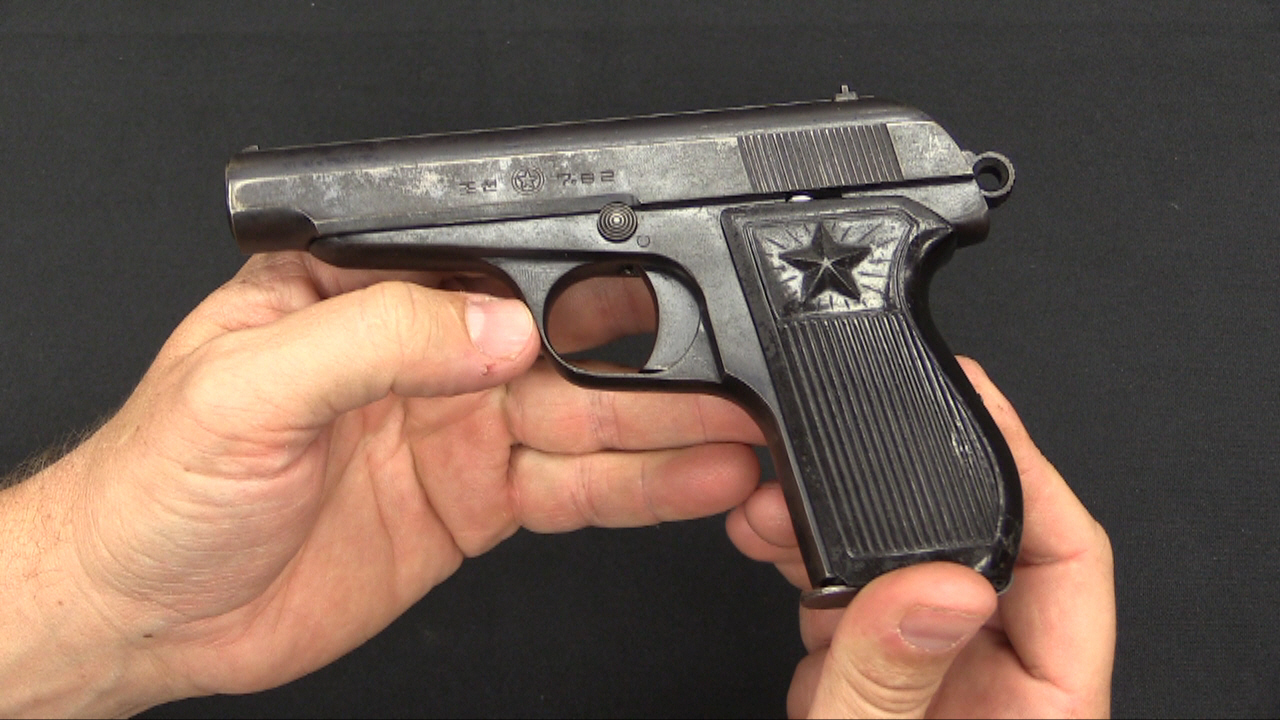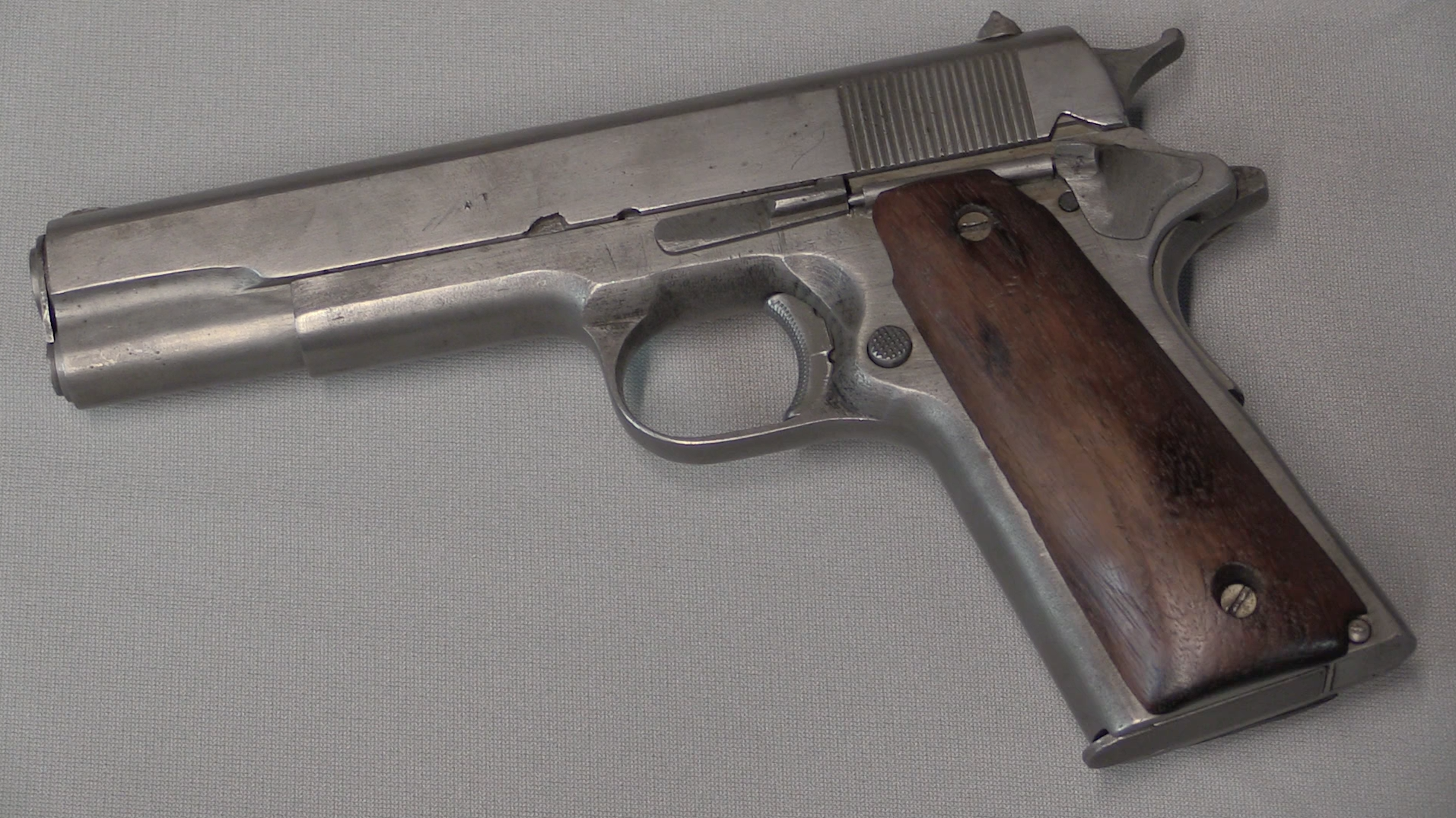In 1949, North Korea began production of a domestic copy of the Soviet PPSh-41 submachine gun. Designated the M49, it used a blend of Russian and Chinese characteristics, but was mechanically identical to the standard model, distinguishable only by its markings and its slightly oval-shaped stock profile.
Production began in a factory located in Pyongyang, which was briefly captured by Allied forces in late 1950. Upon retaking the city, the Korean government moved production to a safer location farther north, where the guns continued to be made until 1955.




Sorry, Ian, but the Soviets DID NOT replaced PPSh-41 with PPS-43. They were introduced simultaneously, for different recipients. The PPSh was a “front-line” SMG for infantry, whereas PPS was a “specialist weapon” for recce, radio, company-level officers etc. As a result, over 5 million Shpagin PPSh were made, and ca. half a million Sudayev PPS – not nearly enough to start the transition inevitable if it was meant to replace the Shpagin.
According to the original conditions of the 1942 competition for a new SMG, it SHOULD become a new combined-arms service SMG.
But everything went as usual.
Hungry and intimidated engineers can’t give out anything worthwhile.
Several samples were submitted to the competition, most of which (due to lack of time) were direct or slightly modified imitation of the MP38/40.
At the same time, the main requirement was the simplicity and low cost of production. Therefore, those samples that were made according to the simplified MP38 scheme did not have an advance ignition automatic. Accordingly, these were just factory-made handicraft crossbows.
And the PPS was the least the worst of the cheapest.
https://warspot.ru/3300-neizvestnye-soperniki-ppsh
https://warspot.ru/3402-pistolet-pulemyot-dlya-krasnoy-armii-shpagin-protiv-sudaeva
https://warspot.ru/4083-dolgaya-doroga-korotkogo-pps
The two sub guns were not introduced simultaneously.
Hence the designation 41 and 43.
There are claims and assertions that the North Korean Model 49/Type 49 Shpagin uses only the 71-round drums while the Chi-com Type 50 uses only the 35 round magazines? Can that be correct? Ian here claims that either the drum or the 35 round magazine can be used. I might add that the Chi-com Shpagin has an aperture sight instead of the open sight here.
The Shpagin was very, very widely used in the Korean War, and contra Ian’s discussion of the Sudaev, apparently the Soviets off-loaded very many Sudaev PPS-43s to China and North Korea, and of course the Chi-coms eventually started manufacturing them as well. After the Korean War ended, there was a massive re-armament of the KPA by China and the USSR, which included more Shpagins and other weapons similar to those used in the war. Apparently the Shpagin was even issued to KPA vehicle crew members as what we would call in modern parlance, a “PDW” like the MP-2 Uzi of the Bundeswehr or the PM-63 of Poland or the M3A1 of the U.S.A. up into the early 1990s.
From my experience handling a Type 50 it follows the standard PPSh-41 rules for mags, where you have to find one that fits whether it’s a box or a drum. Some drum mags did attach, and the bolt was able to run dry just fine with them. No chance to shoot one though, so it could be about feeding, but personally I doubt it. Frank Iannamico also pooh-poohed the claim in a Small Arms Review article here: http://www.sadefensejournal.com/wp/the-soviet-ppsh-41/2/
Haven’t had a chance with a Type 49 but I don’t see why it would be any different. Gotta bear in mind that both types of mag have the same attachment studs, so it’s not like the Thompson where the drums attach in an entirely different way.
I’ve just had a look at the source for the claim on Wikipedia and it refers to a USMC intelligence handbook. Not the best of sources, especially when it identifies the family as ‘PPSh-43’…intelligence docs can be iffy even at the best of times.
“(…)claims(…)that the North Korean(…)Shpagin uses only the 71-round drums(…)”
If https://smallarmsreview.com/display.article.cfm?idarticles=1108 is true, North Korean elected to use:
This was a license built copy of the Soviet PPSh-41 or “Pappa-sha.” The North Koreans chose to use the 71-round drums and not the 35-round curved magazines. Speculation is that the ‘Great Leader’, Kim Il Sung, thought the large-capacity drum was intimidating and tactically an advantage.
Apparently, the question of choosing a magician for the Korean PPSh is that there was no choice.
Nobody was building a new factory for the North Koreans.
They were simply handed over the unnecessary production line of one of the factories that produced PPSh during the war.
Sector mags were produced by other businesses.
If the application did not specifically indicate the need for sector mags, then there were none.